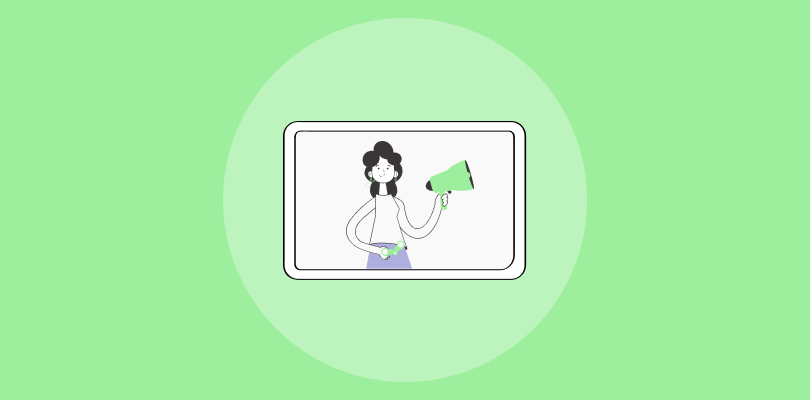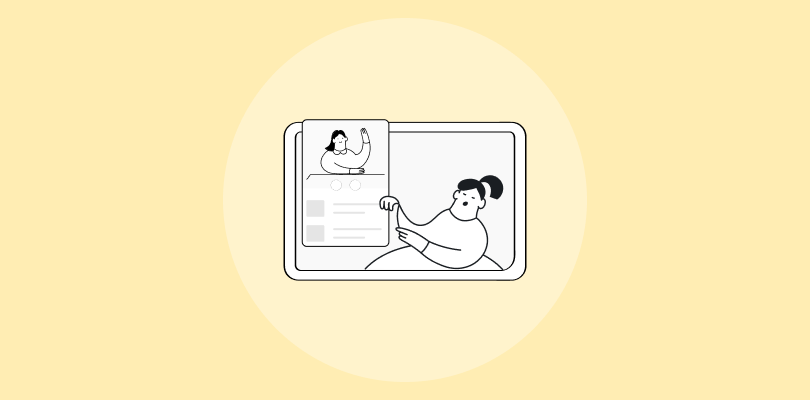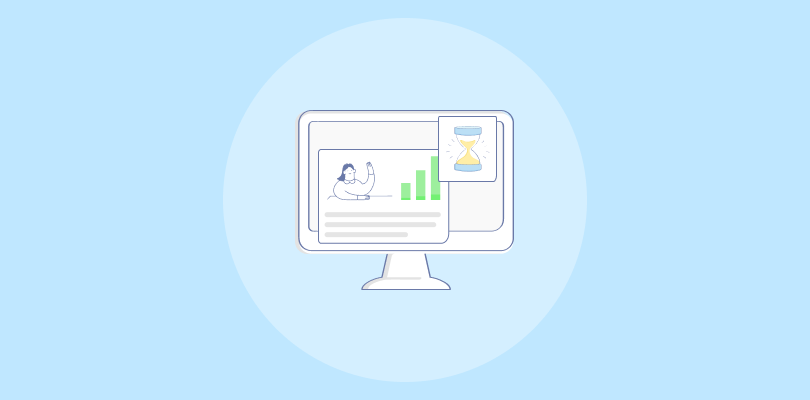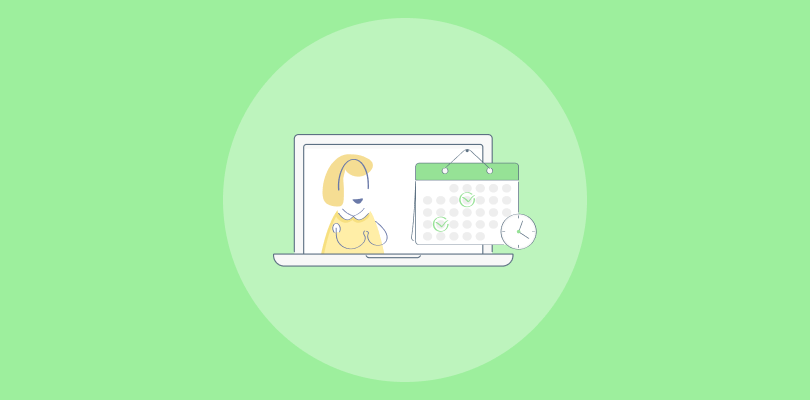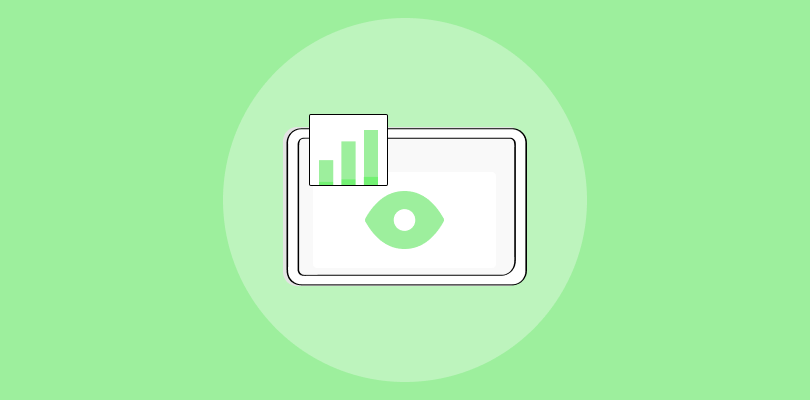What is a webinar? Ever since communication shifted toward the digital space, our ideas of interactions have evolved to accommodate it, and so have the terminologies. You may be well-acquainted with the concept of seminars, but if you are looking for a concrete answer to what a webinar is, you are in the right place.
In simple terms, think of a webinar as an online video workshop. As the closest thing to face-to-face interaction, webinars are one of the best ways to build credibility, earn trust, and grow a potential customer base.
But what makes a webinar work? How do you draw a crowd in a space brimming with options? In this blog, I’ll break down the essentials of webinars—from the basics to the best practices that make these events memorable and impactful.
What is a Webinar?
A webinar is essentially a virtual seminar designed to connect you with your audience no matter where they are in the world. They typically last about 30- 60 minutes and combine the visual appeal of a live audience interaction with the convenience of an online chat session, making it an incredibly powerful tool to generate leads, grow sales, train and communicate, or teach courses.
To make the experience as engaging as possible for participants, you can use interactive features like Q&A sessions, polls, and screen sharing. You have the option to pre-record your webinars, appear live, go hybrid, and even automate them!
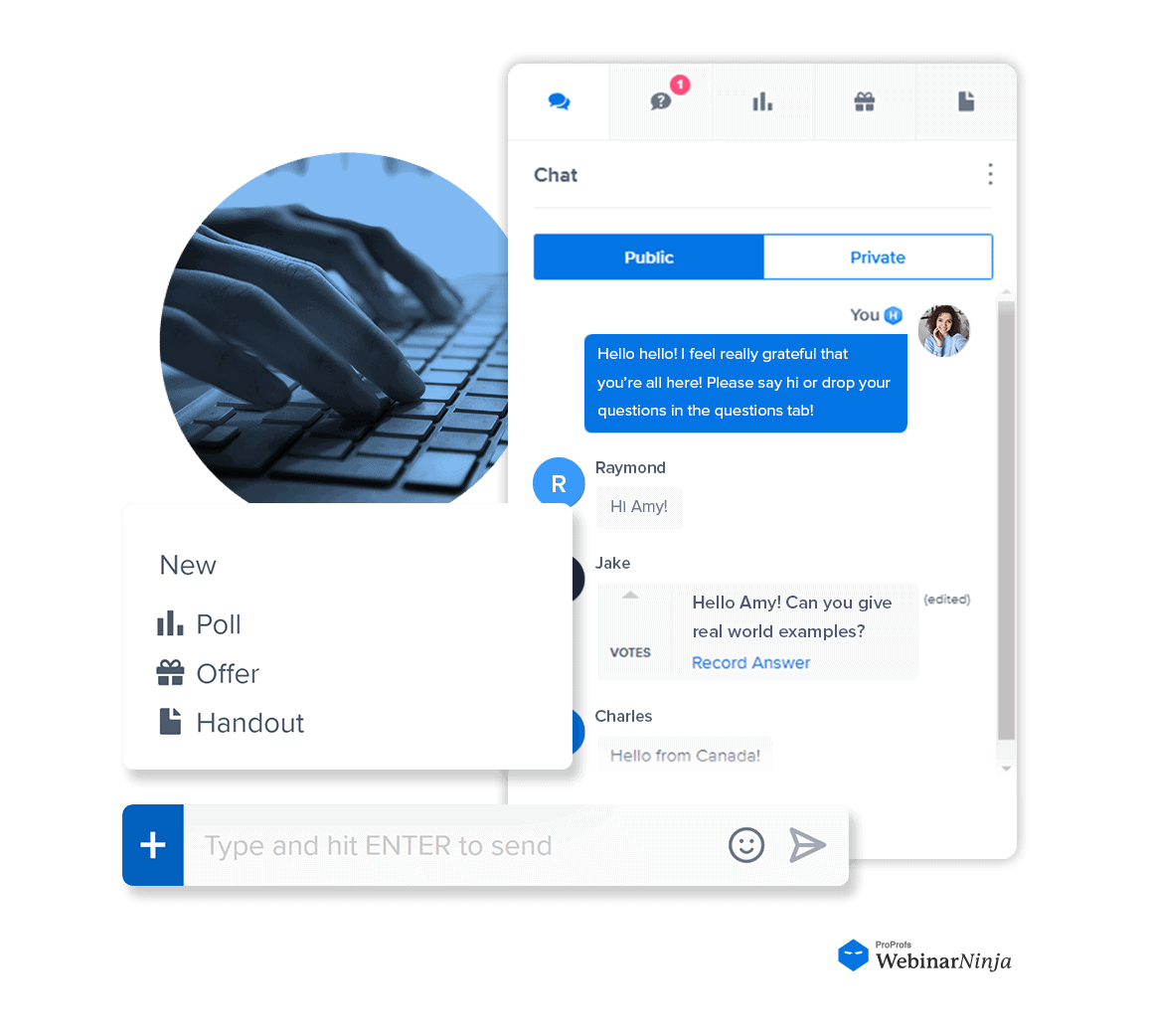
For independent creators, hosting a webinar can be the key to standing out from the rest of the crowd. That’s because they allow you to have a real conversation with your audience and show exactly what you’ve got to offer.
With the right platform and great content, you can parlay webinars into sales— and lots of ‘em!
How Does a Webinar Work?
Let’s have a detailed look at the mechanics behind hosting a webinar, from setup to execution.
1. Preparation and Planning
Before launching a webinar, thorough planning is required. This involves selecting a topic that resonates with your target audience and aligning it with your objectives, whether they are educational, promotional, or networking-based. You also need to choose the right date and time—one that maximizes attendance based on your audience’s geography and availability.
2. Choosing the Right Platform
An efficient webinar platform will offer different features that cater to webinar hosting. These platforms provide tools for handling registrations, sending out reminders, managing Q&A sessions, and integrating with other marketing tools. Choose the tool carefully, as it can greatly affect the execution and reach of your webinar.
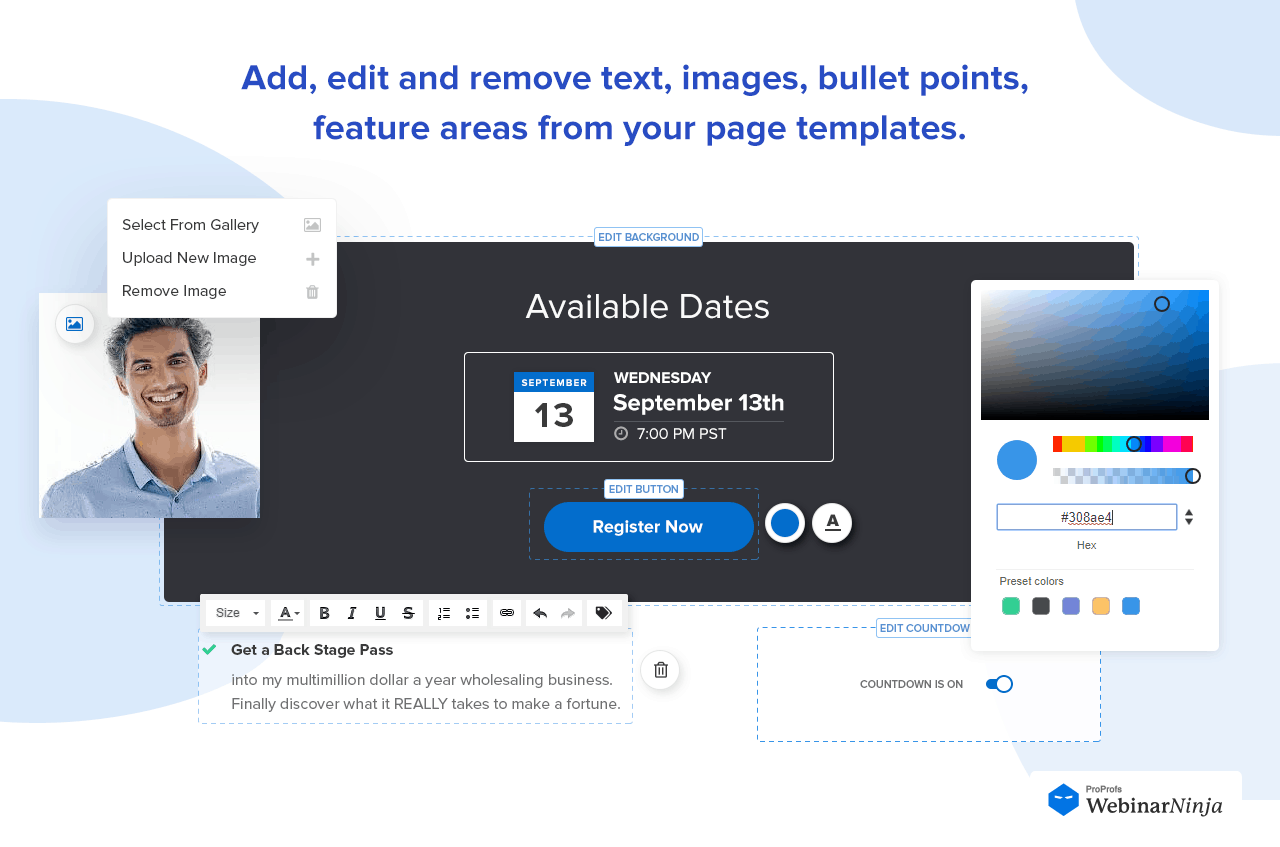
3. Promotion and Registration
Once your webinar is planned and a platform is selected, the next step is promotion. This involves marketing your webinar through email campaigns, social media, and possibly paid advertising to attract registrants. Effective promotion ensures you not only get sign-ups but also active participation on the day of the webinar.
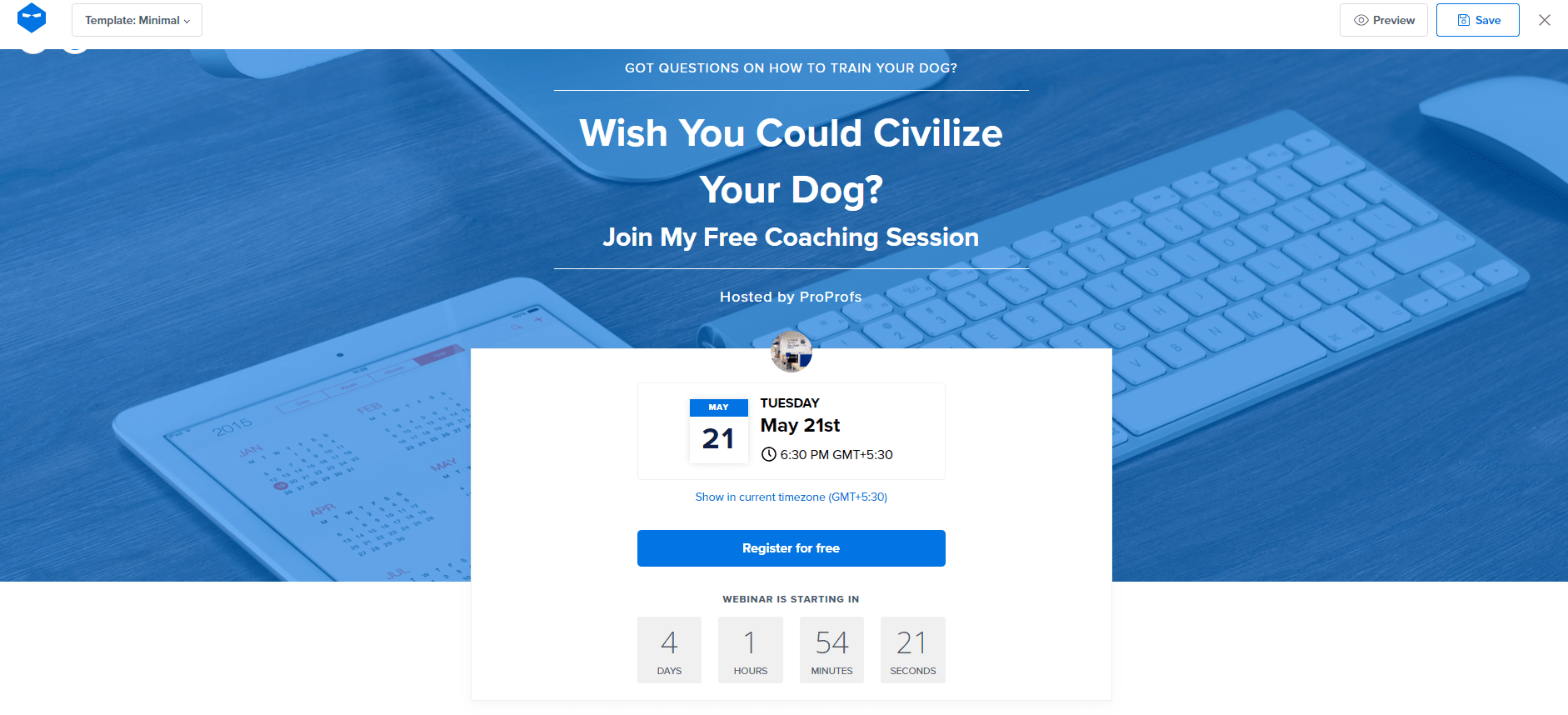
4. Engagement Tools
During the webinar, engagement is key. You can use various interactive tools provided by webinar platforms, such as polls, surveys, chat boxes, and Q&A sessions. These tools make the webinar interactive and help keep the audience engaged. Real-time interaction is a major benefit of webinars, as it allows for immediate feedback and keeps the content dynamic.
5. Presentation and Delivery
On the day of the webinar, the presenter will share their screen, slides, and possibly other multimedia elements to enrich the presentation. It’s important that presenters speak clearly and engage with the webinar tools to interact with the audience. Often, a webinar will have more than one speaker, and smooth transitions between speakers are crucial.
6. Recording and Follow-up
Most webinar platforms allow you to record the session and send it out as a replay to attendees and those who registered but couldn’t attend. Following up with attendees through email to provide additional resources, answer any remaining questions, and perhaps prompt an action (like signing up for a newsletter or attending another event) is a vital step in maximizing the impact of your webinar.
7. Analysis and Feedback
After the webinar, it’s helpful to analyze its success through attendance rates, participant engagement, and feedback received via post-webinar surveys. This feedback is invaluable for improving future webinars and adjusting strategies to better meet audience needs.
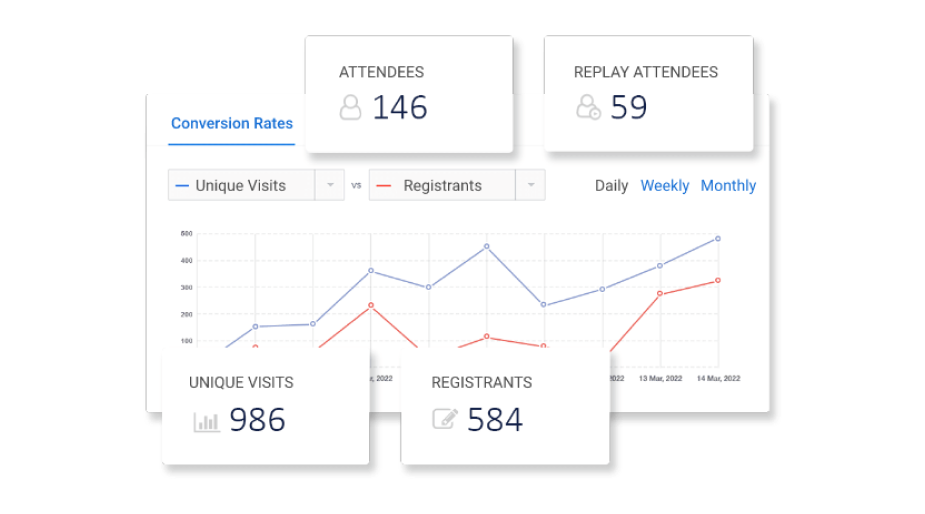
What Are the Types of Webinars?
Webinars come in various formats, each designed to achieve specific goals and cater to different audience needs. First, let’s discuss the various formats and what they each help achieve:
A. Automated Webinars
Automated webinars are pre-recorded, which means they can run without your direct involvement at the time of viewing. This format is ideal for reaching audiences across different time zones without the need to be present. It allows for consistency in delivery, as every participant receives the same content and experience.
Plus, automated webinars can be scheduled regularly to generate leads continuously, making them a powerful tool for on-demand learning and marketing!
Also Read: How to Grow Your Business With Automated Webinars
B. Live Webinars
Live webinars are real-time events where you present directly to your online audience. This format provides the opportunity for live interaction through Q&A sessions, polls, and chat features, creating a dynamic and engaging environment.
The immediacy of live webinars makes them particularly effective for announcements, product launches, or discussions of hot topics where audience participation adds significant value.
C. Series Webinars
Think of series webinars as a television series, where each session is like an episode, part of a broader theme or learning curriculum. This format is excellent for building a comprehensive understanding of a complex subject matter over time.
It helps keep your audience coming back for more, which is great for sustained engagement and deepening viewer commitment to the topic or your brand.
D. Hybrid Webinars
Hybrid webinars combine the elements of live and pre-recorded sessions. For instance, you might show a pre-recorded segment to deliver well-polished content and switch to a live format for the Q&A and discussion parts. This format offers the best of both worlds—reliability and polish of recorded sections, with the engagement and spontaneity of live interaction.
Hybrid webinars are particularly useful for large events where you want to ensure certain content is delivered flawlessly while still engaging with the audience in real-time.
Each of these formats has its strengths and can be used effectively depending on your goals. Automated webinars work well for consistent lead generation and reaching a global audience, live webinars are great for engagement and immediacy, series webinars excel at educational depth and customer loyalty, and hybrid webinars offer a versatile mix that can cater to diverse needs.
Now, let’s have a detailed look at the common types of webinars you might encounter or choose to host:
1. Educational Webinars
These webinars focus on providing new knowledge or insights to the audience. They are often used by educational institutions, training organizations, and businesses to teach live courses, deliver lectures, or offer industry-specific expertise. Presenters go deep into a subject, supported by slides, visuals, and interactive elements like quizzes to reinforce learning.
Also Read: How to Scale Your Online Coaching Business
2. Product Demos
Product demo webinars introduce new products or showcase existing features. They are highly effective in a sales funnel, helping potential customers understand how a product works and how it could solve their problems. The interactive format allows for real-time demonstrations and answering questions, which can help reduce the sales cycle.
3. Panel Discussions
In a panel discussion webinar, multiple speakers debate or discuss a topic, providing different perspectives to the audience. These are popular for covering industry trends, significant changes in law or policy or any subject that benefits from a multi-angle approach. The dynamic interaction between panelists can provide a rich, engaging experience for the audience.
4. Workshops and Training
Webinar workshops are interactive sessions in which the audience is encouraged to participate actively by completing tasks, engaging in exercises, or using software in real-time. These sessions are great for hands-on learning and can be used to train users on new tools, software, or methods.
5. Customer Onboarding and Support
This type of webinar guides new customers through the setup or onboarding process for a service or product. It can also provide ongoing support and training to existing customers, helping them get the most out of a product or service and reducing churn.
6. Thought Leadership and Industry Expertise
These webinars establish the host as a thought leader in a particular industry. Featuring expert insights, innovative ideas, and forward-thinking strategies, they attract attendees interested in cutting-edge discussions and trends.
7. Q&A or Ask Me Anything (AMA)
These are open-ended sessions primarily designed to engage directly with the audience. Presenters invite questions from the participants on a variety of topics, making these webinars highly interactive and spontaneous. They are excellent for building trust and rapport with the audience.
8. Lead Generation Webinars
These are strategically used in marketing to generate leads. They usually offer valuable content free of charge, which attracts potential leads. In return, attendees provide contact information and show interest in a topic related to the company’s products or services, which can later be used for targeted sales initiatives.
Also Read: Webinar Lead Generation – How to Use, Benefits, Best Practices & Tools
9. Sales Webinars
Focused directly on driving sales, these webinars are often more persuasive. They might offer exclusive incentives, discounts, or bonuses for attendees who decide to purchase at the end or shortly after the webinar.
What Makes an Effective Webinar?
Creating an effective webinar isn’t just about having the right content—it’s about connecting with your audience in a meaningful way. Here’s how you can craft a webinar that resonates and delivers:
1. Define Your Goals Clearly
Start by asking yourself, “What do I want to achieve with this webinar?” Whether it’s educating your audience, generating leads, or showcasing a product, a clear purpose will shape everything from your content to the way you engage with attendees.
2. Craft Content That Captivates
Your content is the core of your webinar. Make it compelling and relevant. Mix up your presentation with slides, videos, and live demos to keep things interesting. Think about what unique insights you can offer that your audience can’t get elsewhere—this is your chance to shine as an expert.
3. Be a Presenter Who Connects
The success of your webinar also hinges on your ability to engage and entertain. Be enthusiastic, clear, and responsive. Prepare to handle questions with grace and interact with your audience as if you’re having a conversation in the same room. This personal touch can make all the difference.
4. Make It Interactive
Engagement is key. Incorporate polls, surveys, and Q&A sessions to make your audience feel involved. These interactive moments are not only fun but they give you instant feedback and keep your audience tuned in.
5. Ensure Flawless Execution
Technical glitches can break the immersion of your webinar. Invest in good quality audio and video, and choose a reliable platform. Run through a rehearsal to iron out any issues before you go live—your audience will appreciate the smooth experience.
6. Promote Effectively
Your webinar deserves an audience. Use a mix of email invites, social media posts, and even paid ads to drum up interest. Highlight the key benefits of attending your webinar to make it irresistible.
7. Choose the Right Time
Timing is everything. Pick a slot when most of your target audience is likely to be available, and keep your webinar concise—long enough to cover all your points but short enough to maintain energy and engagement.
8. Follow Up Thoughtfully
Keep the conversation going even after the webinar ends. Send a thank-you email, share a recording of the session, and offer additional resources. This follow-up not only shows you care but also keeps your audience engaged with your brand.
9. Track Your Success
Set up ways to measure how well your webinar did. Look at attendance, participation in polls, and responses to your call to action. By tracking webinar metrics & analytics, you can tweak your approach for next time.
What Are the Benefits of Using a Webinar?
Webinars are a powerful tool that can transform the way you connect with your audience, share knowledge, and grow your business. In this section, I’ve listed why they might just be the game-changer you’re looking for:
1. Reach and Scalability: Webinars break down geographical barriers and open up new possibilities for audience expansion. Whether you’re a startup looking to make your mark or an established company seeking to broaden your reach, webinars allow you to scale your efforts effectively.
2. Cost-Effective Engagement: Holding a live event can be expensive and logistically daunting. Webinars, on the other hand, eliminate the need for travel, venues, and other costly logistical details. They offer a budget-friendly way to engage with a global audience directly from your office or home.
3. Interactive and Engaging Learning Experiences: Webinars aren’t just a one-way street. They thrive on interactivity. You can engage in real-time discussions, answer questions, and get immediate feedback through polls and surveys. This dynamic interaction makes your content more engaging and helps in building a personal connection with your audience.
4. Content that Keeps on Giving: Once your webinar is over, it doesn’t have to disappear. You can repurpose it into a variety of content formats. Record your sessions and offer them as on-demand webinars, turn snippets into instructional videos or use key takeaways for blog posts and infographics!
5. Lead Generation and Conversion: Webinars are an excellent way to generate high-quality leads. Participants have already shown interest in your subject by registering and attending, giving you a list of engaged prospects to follow up with. Moreover, the interactive nature of webinars allows you to effectively communicate the benefits of your products or services in a convincing way that can drive sales.
6. Positioning as an Industry Expert: By hosting webinars on relevant and timely topics, you can showcase your expertise and establish your credibility in your field. This is invaluable for building trust with your audience and positioning yourself as a thought leader.
7. Flexibility in Content and Style: Whether you want to deliver a detailed presentation, host a lively panel discussion, or conduct a hands-on training session, webinars give you the flexibility to choose the format that best suits your content and audience needs.
Real-Life Success Story
How using webinars helped an HR consultant build an HR consulting agency.
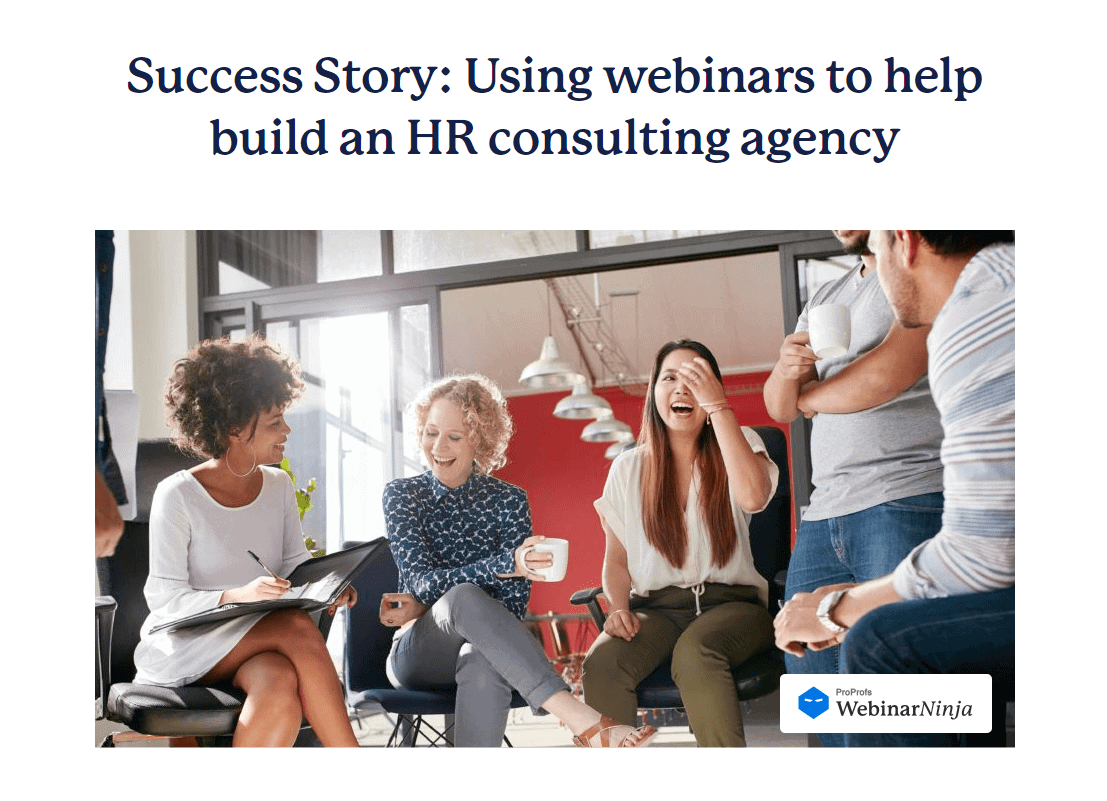
“Since I’ve set it up, I only have to do a little refresh marketing. My time can be spent working with current clients instead of feeling the need to run live webinars every day.” – Amanda Haddaway, HR Answerbox
The Next Step: Where to Go from Here
Webinars are more than just digital presentations; they are a dynamic and versatile platform for connecting with audiences, sharing knowledge, and expanding your reach.
By understanding the different types of webinars and leveraging the right format, you can create engaging and impactful events that not only convey your message but also build lasting relationships with participants. When considering meetings vs webinars, it’s crucial to recognize how each format serves distinct purposes—webinars excel in delivering content to large audiences, while meetings are more suited for interactive, collaborative environments. Remember, the success of a webinar lies in its ability to engage, inform, and inspire action.
Consider the unique advantages each format offers, and tailor your approach to suit your audience and your goals. With careful planning and a clear understanding of the fundamentals, you’re well on your way to mastering the art of the webinar.
A robust webinar tool, such as WebinarNinja, can make your pursuits successful. To explore the tool, get a demo or sign up for free!
Start sharing your story, growing your community, and transforming your online engagement with webinars!
Want to host a webinar for free?
Use WebinarNinja to teach, improve marketing, and grow your sales.



